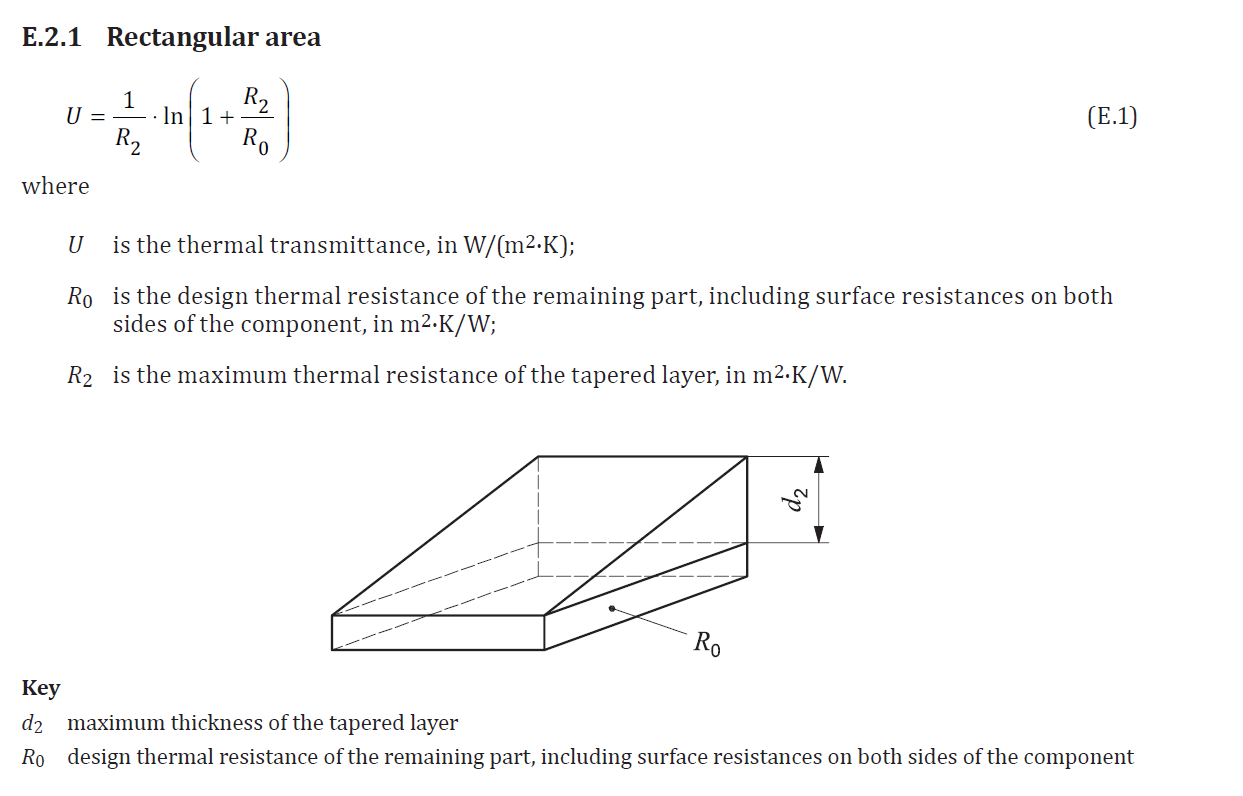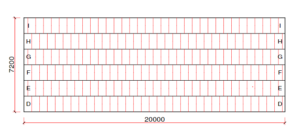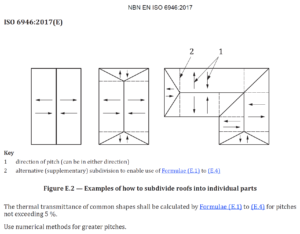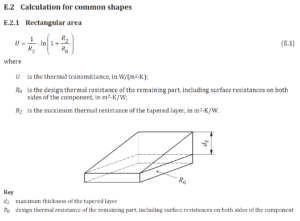A GUIDE TO ANNEX E CALCULATION FOR THERMALLY EFFICIENT ROOF APPLICATIONS.

Designing a roof requiring tapered insulation is beset with challenges, with consequences for the contractor and specifier. James Wilkinson, Design Office Manager for Gradient, explains.
The calculation of U-values is defined by an international standard “BS EN ISO 6946” and in 1997 it included for the first time guidance on how tapered insulation should be calculated. The annex containing this guidance has become synonymous with the calculations issued to demonstrate the U-values they are now known as Annex E calculations.
Across England, Wales and Scotland the Building Regulations relating to energy use and thermal performance take a holistic view of the whole building. U-value targets for floors, walls and roofs are just one part of the overall picture, and that picture is flexible, allowing freedom in design and specification subject to meeting a set of minimum criteria.
The required U-value performance is determined by SAP (Standard Assessment Procedure) calculations for domestic properties and SBEM (Simplified Building Energy Model) calculations for commercial buildings. The noted methods offer this flexibility through a compensatory approach in relation to the buildings elemental U-values. This means underperforming elements can be offset by improved thermal performance elsewhere in the build.
It is critical to ensure the building design and specified U-values can be achieved on site, otherwise the finished building will suffer a shortfall in performance (the Performance Gap). While Annex E calculations for tapered roofs have improved clarity for the insulation designers, they are less easy to understand for specifiers, contractors and some suppliers and that can be its own issue.
So what is Annex E exactly? Most insulation in a building is specified at a uniform thickness. In the particular construction where it is being used, it therefore achieves a consistent U-value throughout. So it stands to reason that where tapered insulation is used the U-value will vary as the thickness varies.
While it may sound simple to take this into account, for an accurate calculation it is necessary to account for the roof pitch and length of fall as well as the minimum thickness of insulation. Consider a basic rectangular roof, with a 0.18 W/m2K U-value target and a 1:60 fall required across the width of the roof:
Flat board: 130mm
Equivalent average thickness: 130 (70-190)
Annex E: Average 140 (80-200)
If the fall was to be created using firrings (or a similar method) then the required thickness of flat, tissue-faced board is straightforward to establish: 130mm.
A calculation for average thickness would result in a tapered range of 70mm to 190mm. The Annex E calculation works out that the thickness range should, in fact, be 80mm to 200mm.
This may seem close enough but bear in mind it is the simplest of roof designs. And even the smallest discrepancy from the designed thermal performance could result in the as-built SAP or SBEM calculations failing to meet the regulatory requirements and potentially costly remedial measures being required at the end of the build.
In addition, most roofs are more complex than a basic rectangle, featuring hips and valleys and varying lengths of falls. For an Annex E calculation, the roof design has to be broken down into a series of rectangular tapers, flat rectangles and triangles (both thinnest and thickest at apex).
The more elaborate the roof layout, the more difficult and time-consuming the tapered insulation design and calculations become, even when using tailored calculation software. The following excerpts from BS EN ISO 6946 illustrate how roofs should be broken down.
The considerations don’t stop there either.
When all of the constituent pieces and shapes are accounted for, a definitive Annex E calculation can be provided to demonstrate compliance as part of the overall building design. The following illustrates a typical example:
So with calculations this complex, how can specifiers and contractors hope to understand whether a tapered insulation scheme complies with the U-value target established for a project? And where does any liability for non-compliance rest?
Tapered insulation designers can only interpret the scheme and specification given to them, highlighting the need for good communication and collaboration throughout the design and construction process. If errors occur or changes are required they should be raised as early as possible in the process to avoid costly remedial consequence.
Conscientious manufacturers support the scheme for competent U-value calculations that is administered by the BBA. Although Annex E calculations do not currently form part of the scheme, it is no less important that designers preparing calculations have a good grounding in basic calculation principles and have the support of BBA competent persons.
Although complexity has increased with regards to roof calculations (leaving many older schemes in the market non-compliant) Gradient and their team of tapered designers can offer guidance for both new and existing roofs and smooth the process, ensuring correctly detailed and calculated schemes can be achieved with minimal effort for the specifier, contractor or supplier.











